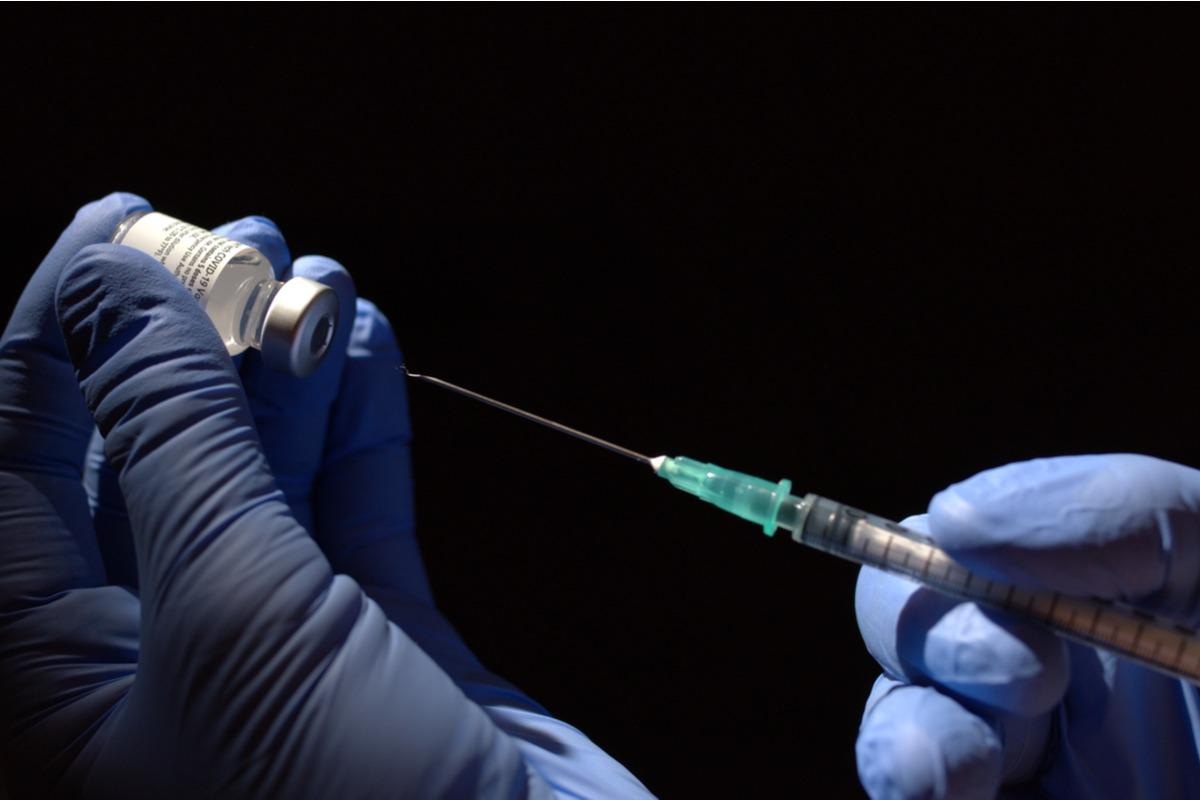A team of researchers assessed the extent and duration of the neutralization of the severe acute respiratory syndrome coronavirus 2 (SARS-CoV-2) Omicron variant of concern (VOC) after the administration of two and three doses of the BNT162b2 messenger ribonucleic acid (mRNA) vaccine.
The results of this new study are available on the BioRxiv* preprint server.
 Study: Neutralization of Omicron SARS-CoV-2 by 2 or 3 doses of BNT162b2 vaccine. Image Credit: cortex-film/Shutterstock
Study: Neutralization of Omicron SARS-CoV-2 by 2 or 3 doses of BNT162b2 vaccine. Image Credit: cortex-film/Shutterstock
Introduction
The newly emerging VOCs of SARS-CoV-2 such as Alpha, Beta, Gamma, Delta, and Omicron have continued to cause significant morbidity and mortality globally. These VOCs can potentially alter disease severity, viral transmission, therapeutic antibody efficacy against the virus, and also vaccine efficiency.
The SARS-CoV-2 Omicron VOC has been found to cause breakthrough infections in previously SARS-CoV-2-infected and in fully vaccinated individuals. Hence, there is an urgent need to study the effect of vaccines in neutralizing the Omicron variant.
About the study
The present study assessed the antibody neutralizing effect of two and three doses of the BNT162b2 mRNA vaccine on SARS-CoV-2 Omicron VOC.
To analyze the neutralizing effect of the mRNA vaccine on the Omicron VOC, a recombinant SARS-CoV-2 Omicron-spike was constructed by incorporating the Omicron spike gene into an infectious complementary DNA (cDNA) clone using polymerase chain reaction (PCR) -based mutagenesis.
In vitro ligation was used to assemble the complete Omicron spike mutations into a full-length viral genome cDNA. This cDNA was then used for in vitro transcription of genome-length viral RNA, which was further electroporated into Vero E6 cells. The resulting viral stock was then subjected to a plaque assay to quantify the infectious titer which was then used for neutralization testing and measured for its plaque-forming unit (PFU) and the specific infectivity of each virus (genome/PFU).
Plaque reduction neutralization testing was conducted on four serum panels consisting of BNT162b2-vaccinated individuals at different collection points. The first panel included sera collected two or four weeks after the second dose of the mRNA vaccine. The second panel consisted of samples collected on the day of the third BNT162b2 dose, which was administered 7.9 to 8.8 months after the second dose. The third panel was collected one month after the third dose while the fourth panel was collected four months after the third dose.
Results
The results showed that the Omicron spike virus resulted in smaller plaque formation as compared to the plaques formed by wild-type SARS-CoV-2. However, both the plaques had equivalent genome/PFU ratios.
In the first panel, the sera neutralized wild-type SARS-CoV-2 at a geometric mean titer (GMT) of 511, while a GMT of 20 was observed when Omicron-spike SARS-CoV-2 was neutralized. All the serum samples in the first panel had neutralization titers of 160 or above in the case of wild-type SARS-CoV-2; however, the Omicron-spike SARS-CoV-2 had neutralization titers of 20 or higher in 11 out of the 20 serum samples studied.
In the second panel, a GMT of 65 was observed against wild-type SARS-CoV-2 and a GMT of 13 against Omicron-spike SARS-CoV-2. The third panel had a GMT of 1,342 in the neutralization of wild-type SARS-CoV-2 and a GMT of 336 in the case of Omicron spike. The sera in the fourth panel neutralized Omicron-spike SARS-CoV-2 and wild-type SARS-CoV-2 with GMTs of 171 and 820, respectively. An average GMT of 28 or higher was observed in the fourth panel for the neutralization of the Omicron spike virus.
Conclusion
The study results show that two to four weeks after the second mRNA vaccine dose, the Omicron spike neutralization GMT was 25.6 times lower than wild-type SARS-CoV-2 neutralization GMT. Differences in assay formats, assay protocols, and time of sampling of sera could be responsible for the difference in the GMTs of Omicron and wild type SARS-CoV-2.
It was observed that the neutralization GMTs against both the wild-type and the Omicron spike virus increased by 2.6 and 16.8 times, respectively, after the administration of the third dose of the mRNA vaccine. Thus, after the third dose, the neutralization GMT of the Omicron spike was 6.5 times higher than that of wild-type SARS-CoV-2. Also, GMTs against wild-type SARS-CoV-2 and Omicron spike virus were found to be 1.6 and two times lower after a period of one to four months after the third dose, indicating similarity in antibody decay kinetics in the variants. The similarity in genome/PFU ratios between the Omicron spike virus and the wild-type SARS-CoV-2 indicated similar viral specificities.
Taken together, the findings show that three doses of the BNT162b2 mRNA vaccine presented significant neutralization activity against the Omicron spike virus. Notably, the neutralization GMT against the Omicron spike virus after the third dose was close to the neutralization GMT against wild-type SARS-CoV-2 after the second dose.
This study concludes that a third dose BNT162b2 mRNA vaccine could help minimize the disease severity of Omicron SARS-CoV-2.
*Important notice
bioRxiv publishes preliminary scientific reports that are not peer-reviewed and, therefore, should not be regarded as conclusive, guide clinical practice/health-related behavior, or treated as established information.
- Hongjie Xia, et al. (2022). Neutralization of Omicron SARS-CoV-2 by 2 or 3 doses of BNT162b2 vaccine. bioRxiv. doi: https://doi.org/10.1101/2022.01.21.476344 https://www.biorxiv.org/content/10.1101/2022.01.21.476344v1
Posted in: Medical Science News | Medical Research News | Disease/Infection News
Tags: Antibody, Assay, Coronavirus, Coronavirus Disease COVID-19, DNA, Efficacy, Gene, Genome, in vitro, Ligation, Mortality, Omicron, Polymerase, Polymerase Chain Reaction, Respiratory, Ribonucleic Acid, RNA, SARS, SARS-CoV-2, Severe Acute Respiratory, Severe Acute Respiratory Syndrome, Syndrome, Transcription, Vaccine, Virus

Written by
Susha Cheriyedath
Susha has a Bachelor of Science (B.Sc.) degree in Chemistry and Master of Science (M.Sc) degree in Biochemistry from the University of Calicut, India. She always had a keen interest in medical and health science. As part of her masters degree, she specialized in Biochemistry, with an emphasis on Microbiology, Physiology, Biotechnology, and Nutrition. In her spare time, she loves to cook up a storm in the kitchen with her super-messy baking experiments.
Source: Read Full Article
